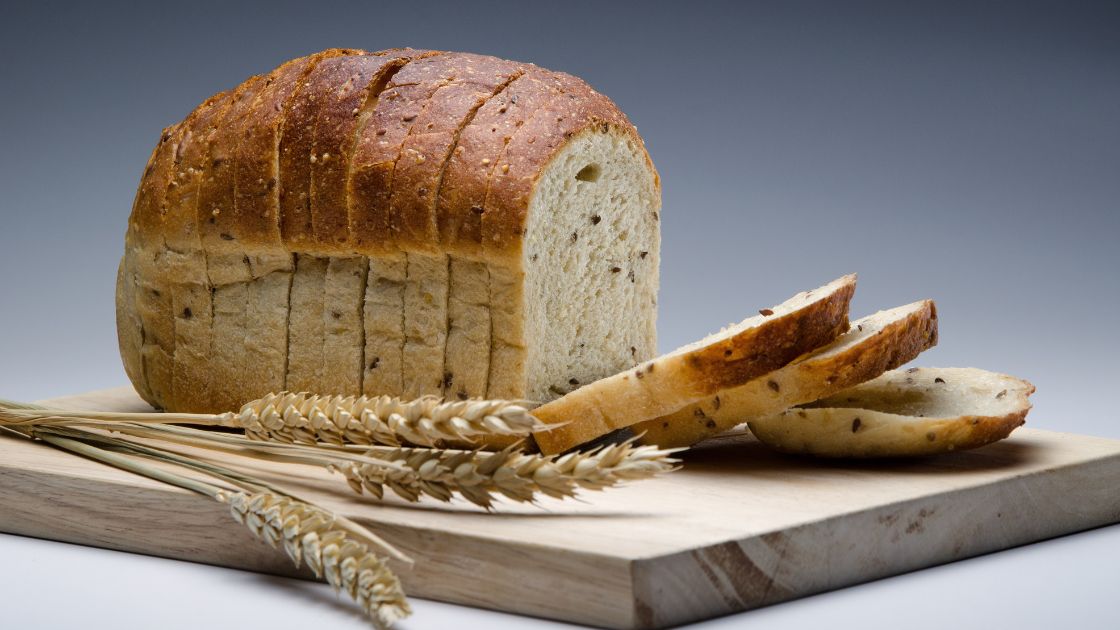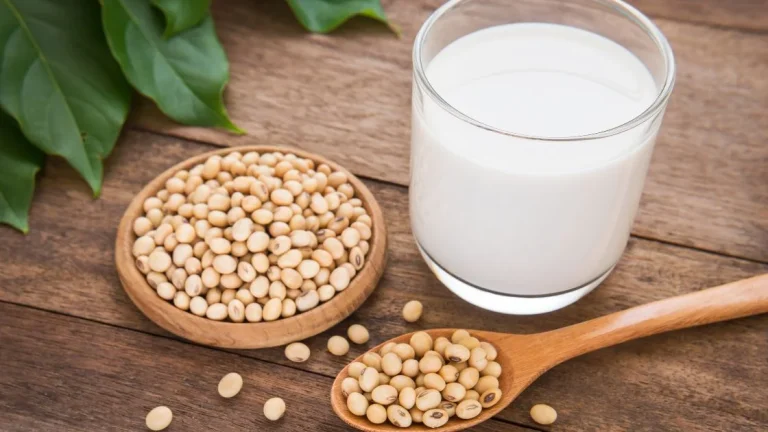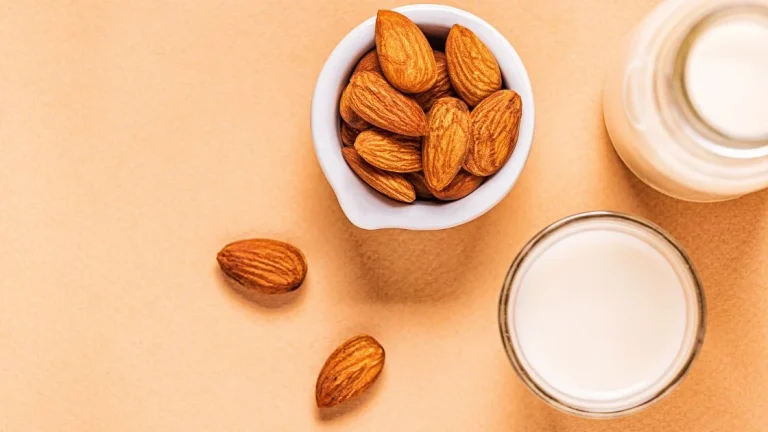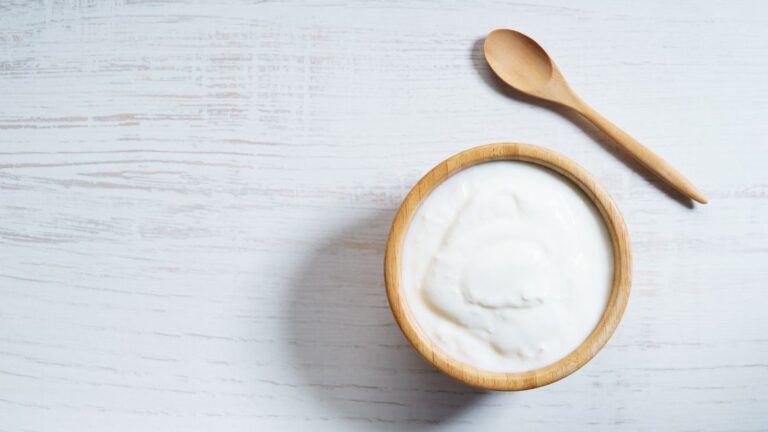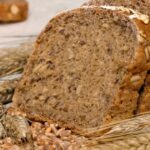Bread is not always seen in the most favorable light, but it is still the staple food for most of us.
Gone are the days of boring old white or brown bread options.
Wholemeal bread has made a lasting impression on dieticians and health experts.
This blog will look into this (wonder) bread and its health benefits.
For a healthier, happier you consider whole meal bread for health.
Continue reading for the lowdown on the benefits of eating whole grains.
What is Wholemeal Bread?
Whole grain bread is the ultimate healthy alternative, easily found in stores or baked at home.
This might seem like a small difference, but it provides a more consistent taste and texture overall.
You can bake it with simple, healthy ingredients, including grain kernel, much healthier and more nutritious than bread made from refined flour.
If you are looking for a way to introduce a healthier staple food into your diet, this might just be the solution that you are looking for.
Whether you want to improve your cardiovascular health or lose some belly fat, the benefits are numerous.
Difference Between Whole meal and Wholegrain
Wholemeal bread is essentially the same as wholegrain, except the grains have been milled to a fine texture.
Furthermore, the ingredients also differ slightly, with both varieties containing the entirety of the wheat kernel but different grains.
Wholemeal bread contains bran, germ, and endosperm, whereas the wholegrain variety contains different types of rough grains such as oats, barley, and rye.
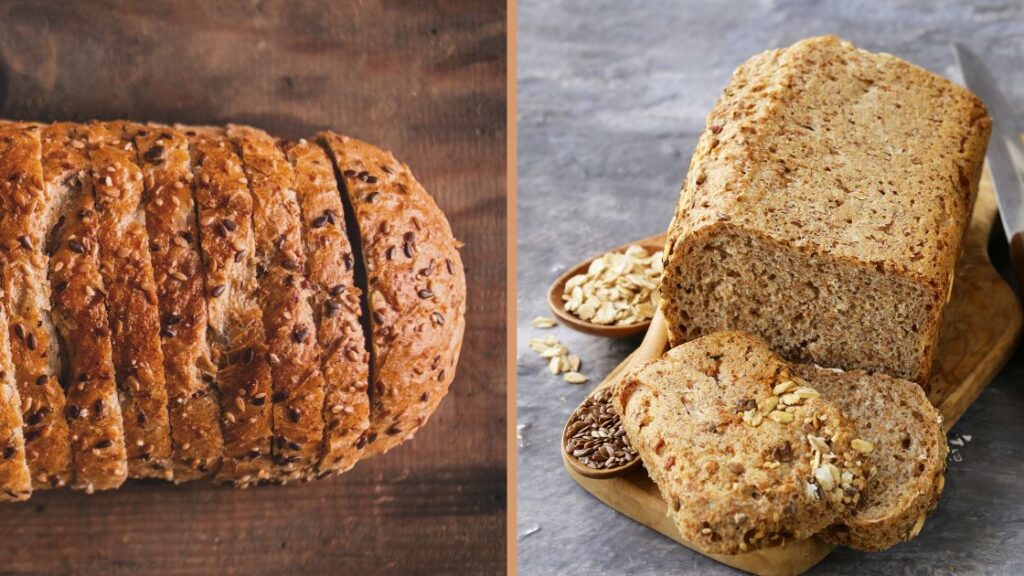
The main health difference between the two is the number of nutrients.
The meal contains more fiber, B vitamins, and minerals, and a simple switch from wholegrain can benefit your digestive health.
What Goes Best With Wholemeal Bread?
It is the perfect addition to any breakfast or lunch.
Simply switch over from white bread and start adding your favorite healthy ingredients, including egg, avocado, lettuce, and other greens.
One crucial factor you should consider when combining ingredients with grain food is that adding another germ or bran would not be the best idea – it takes longer to digest.
A healthy salad with a quick lunch or breakfast will do wonders.
5 Health Benefits of Wholemeal Bread
As we’ve illustrated, you can’t go wrong, but if you are still deciding which type of bread to buy, let’s have a final look at its health benefits.
Aids in Weight Loss
Eating whole wheat bread to lose weight?
It’s not that simple, but it will certainly help.
In essence, there is not much of a calorie and fat intake difference between white and grainy bread, but the nutrients make a big difference in helping to shed a few pounds.
It’s important to remember that whole wheat bread weighs much more, and you need much less to make you full for that quick health sandwich at lunchtime.
Loves Your Heart
It’s not that far-fetched to say that grains love your heart almost as much as you do. Middle-aged?
Then, it’s time to make the switch.
Whole grain foods lower your risk of heart disease, high blood pressure, and cardiac arrhythmia.
In essence, it can help to maintain a healthy overall immune system.

Lowers Diabetes Risk
The dietary fiber in this bread can significantly improve your cholesterol levels and benefit anybody at risk of diabetes.
Including whole grains can lower rates of type 2 diabetes and has been proven in studies among those who ingest whole grains and those who don’t.
This further supports the recommendation by healthcare professionals to introduce more whole grains into your diet.
Rich in Vitamins and Minerals
Whole wheat flour provides completely different nutrients and vitamins than refined wheat.
With vitamins such as B1, B2, and B3, you can look forward to aiding in cell health, the growth of red blood cells, a boost in energy levels, digestion, appetite, and proper nerve function.
Let’s not forget it also contains mineral salts, including phosphorus, calcium, and potassium.
Fewer Calories and More Fibre
Fibre! One of the best aids in weight loss.
Compared to other breads, whole wheat contains the highest amount of fiber.
Not only will it help you firm up your belly, but it also supports healthy digestion and gut bacteria.
Head to The Bread Aisle
As we have seen, wholemeal bread for health advancements can significantly benefit you, your bowels, and your weight loss journey.
Given this information, it is important to switch if you are struggling with your weight, cardiovascular health, or diabetes.
Go ahead and try the wholemeal option to introduce a new staple to your diet effortlessly.
How to Incorporate Whole Wheat Bread into Your Diet
Incorporating wholemeal bread into your diet is easy and can add a nutritious twist to your meals.
Here are a few ideas on how to enjoy this healthy bread:
- Toasted Sandwiches: Swap your regular white bread for wholemeal bread when making your favorite toasted sandwiches. Load it with lean protein, fresh vegetables, and a smear of avocado for a satisfying and nutritious meal.
- Open-Faced Sandwiches: Create delicious open-faced sandwiches using wholemeal bread as the base. Top it with various ingredients like sliced turkey, tomato, cucumber, and a sprinkle of herbs for added flavor.
- Breakfast Option: Start your day with a slice of wholemeal toast topped with almond butter and sliced banana. This combination provides a good balance of protein, healthy fats, and carbohydrates to energize you throughout the morning.
- Bread Crumbs: Make your bread crumbs by toasting slices of wholemeal bread and then pulsing them in a food processor. These homemade bread crumbs can be a healthier alternative to store-bought ones in recipes like meatballs or breaded chicken.
- Croutons: Cut slices of wholemeal bread into small cubes, toss them with olive oil and your favorite seasonings, and bake until crispy. These homemade wholemeal croutons can add a nutritious crunch to your salads or soups.
Remember, when incorporating wholemeal bread into your diet, it’s essential to focus on portion control and balance it with other nutrient-dense foods.
Enjoy the versatility of wholemeal bread and discover new ways to include it in your meals for a healthier and happier you.
